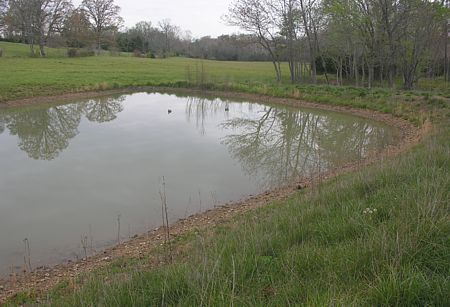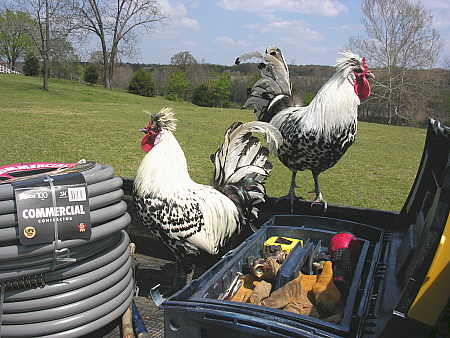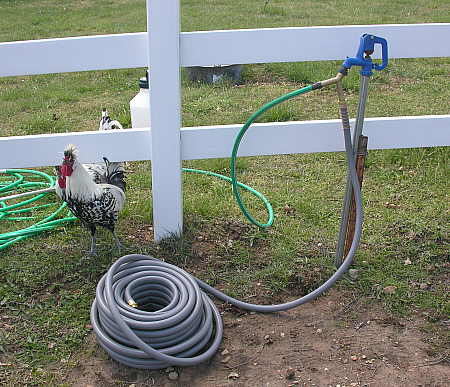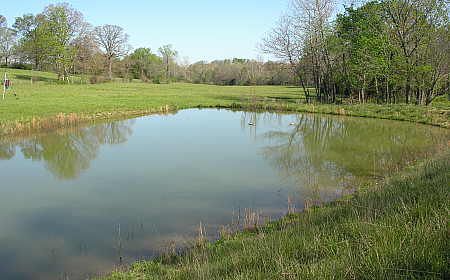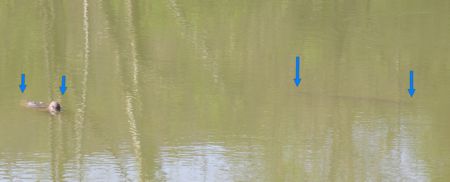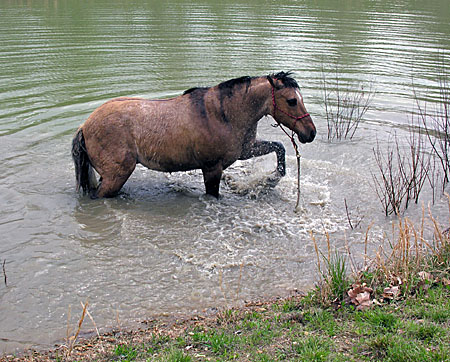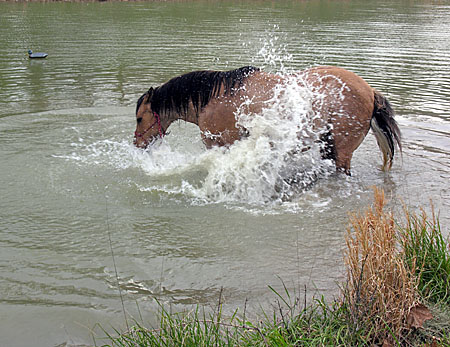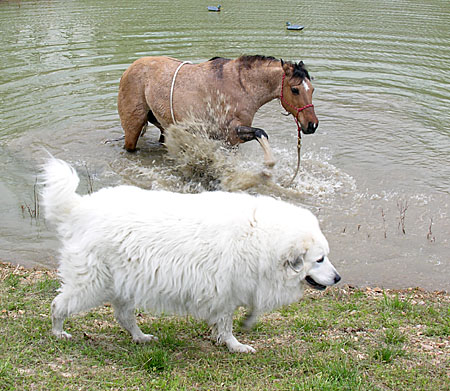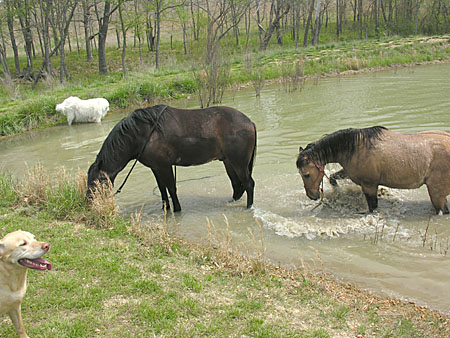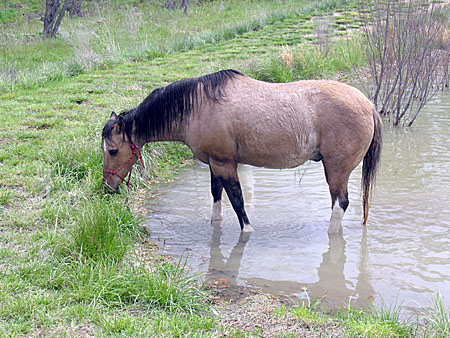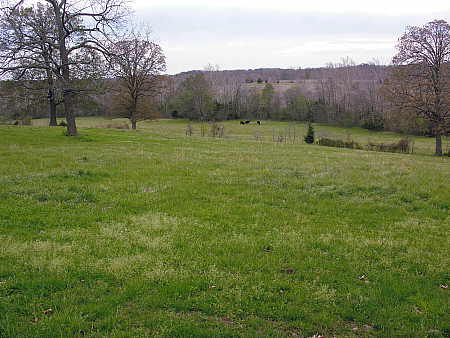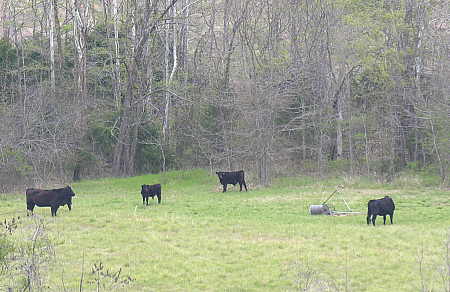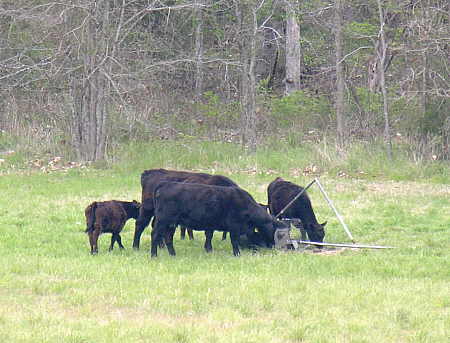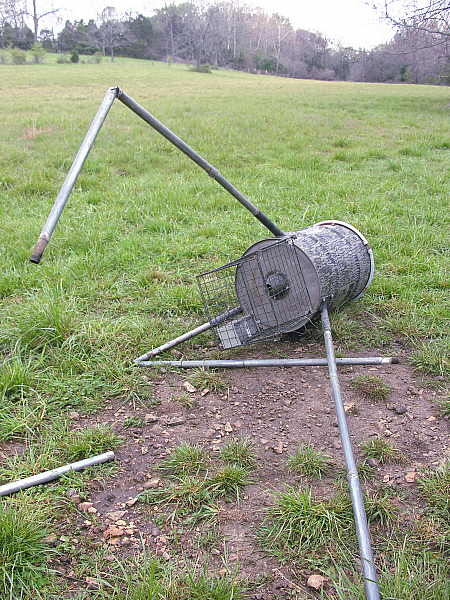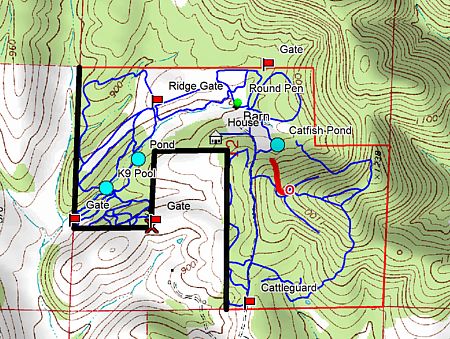When I noticed that the water level was down in one of our ponds, I began to wonder if the fish were drinking it all.  But after some reflection I realized that 6 grass carp, even aided by a couple of thousand minnows, couldn’t ever drink that much water ;)Â
Actually, the water level in this pond is affected by neither the tides nor the voracious thirst of it’s resident fish populations, but by the slow, unrelenting process of evaporation. Now, if this were a deep pond, I wouldn’t be concerned about the seasonal changes in it’s water level.  But due to some problems encountered during the construction of this pond, the pond is temporarily destined to remain in it’s present shallow state (until such time as budget constraints allow for remedial construction work).
Because this is a shallow pond, it is prone to develop masses of aquatic plant and algae life. The algae that has formed in this pond in the past was the bright green, unsightly gunk that one does not want to view from the kitchen window constantly, so some kind of action was required to prevent the aquatic growth. Not wanting to utilize chemical treatments (for a variety of reasons), we have opted to stock this pond with a small number (6) of grass carp, also known as the white amur. This species of fish is commonly used for the purpose of controlling aquatic vegetative matter, and they have been successfully accomplishing that function in this pond.
The white amur is a herbivorous fresh water fish that is native to the orient. Because this is a non-native species that tends to want to follow the flow of water, many states have certain requirements that must be met in order to legally stock them in a private pond. Arkansas does not have such a requirement, but a listing of southern state permit requirements can be found at the Southern Regional Aquaculture Center.
Back to my problem, which is the low water level in the pond. Something needed to be done to raise the water level, and since mother nature has not been all that cooperative in the rain department, I had to take matters into my own hands (OK – I’ll acknowledge I had a little help from my friends here.
The temporary solution to the low water level was to simply attach enough garden hose to the closest freeze-proof hydrant and run it on down to the pond. After a few days of running the hose, the pond was again full.
Now, when the rains are insufficient to replenish the water that has evaporated, I can simply turn on the hydrant for a few hours per week to keep the pond level up. This keeps both me, and the grass carp happy.
On the left-hand side this photograph you can see a half-submerged decoy duck (which I admittedly need to fish out of the pond, clean, and re-float). On the right you can just barely see one of the grass carp. The decoy measures 12″ in length, so I am guessing that the length of the carp is over 24″. The adult grass carp will reach a length of about 4 feet, and weigh in at around 40 pounds.
Besides the grass carp to control the algae, and minnows to help control insect larva, you can see that this pond supports a health population of tadpoles. That’s a good thing, because summer wouldn’t be the same without the chorus of a thousand frogs to listen to each evening.


